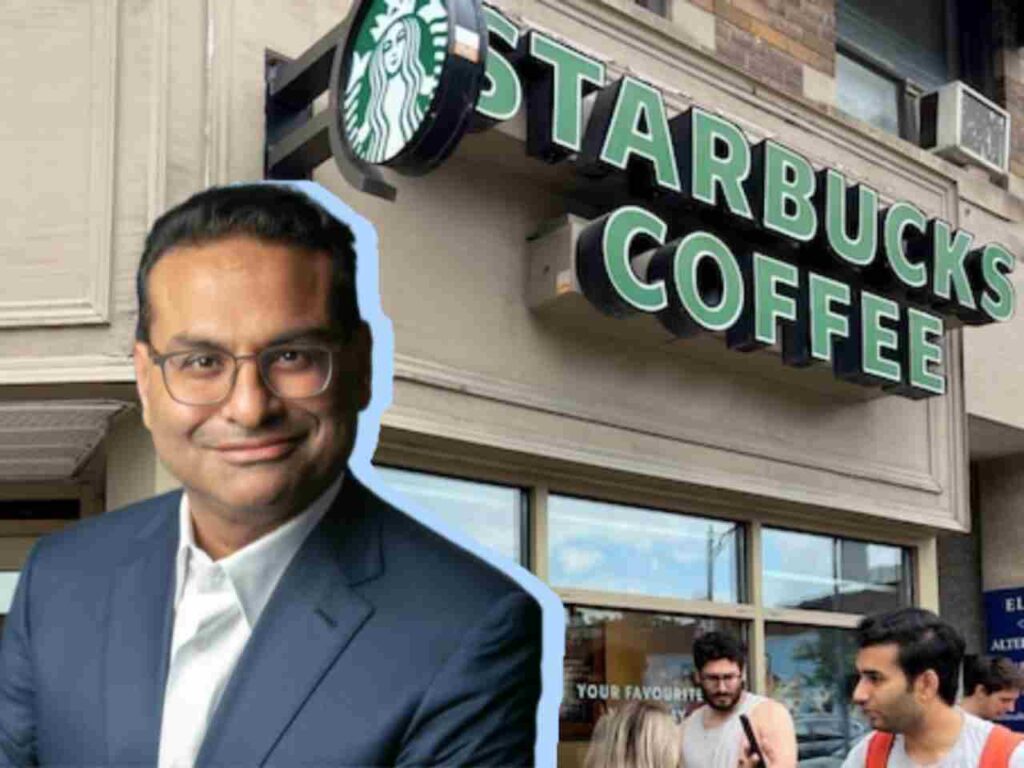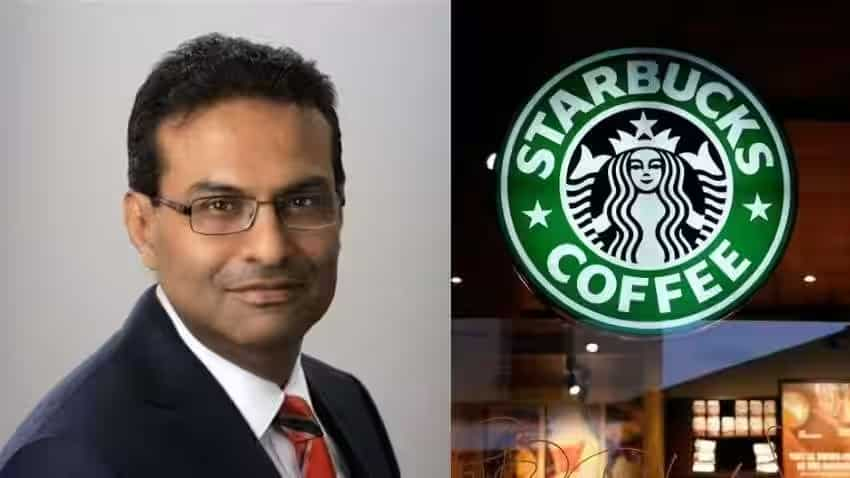Laxman Narasimhan’s Background and Career Path: Starbucks Ceo Laxman Narasimhan

Laxman Narasimhan, the current CEO of Starbucks, brings a wealth of experience in consumer goods and global leadership to the coffee giant. His journey has been marked by a series of strategic roles in prominent companies, showcasing his ability to drive growth and innovation in diverse markets.
Key Roles and Accomplishments
Narasimhan’s career path reveals a consistent focus on building and scaling businesses across different industries. Before joining Starbucks, he held leadership positions at PepsiCo, where he gained invaluable experience in consumer packaged goods and global strategy. His contributions to PepsiCo included:
- Leading the company’s global beverage business, where he oversaw a portfolio of iconic brands and implemented strategies to enhance market share and profitability.
- Successfully navigating the complexities of global markets, adapting product offerings to meet the diverse needs of consumers around the world.
- Driving innovation and product development, introducing new beverage concepts and expanding PepsiCo’s reach into emerging markets.
Narasimhan’s tenure at PepsiCo was followed by a pivotal role at Reckitt Benckiser, a leading consumer health and hygiene company. Here, he spearheaded the company’s global strategy and operational excellence initiatives, demonstrating his ability to:
- Transform businesses by streamlining operations, enhancing efficiency, and driving sustainable growth.
- Lead a global team, fostering a culture of collaboration and innovation across diverse markets.
- Implement data-driven decision-making, leveraging analytics to optimize business performance and identify new growth opportunities.
Leadership Style and Management Philosophies, Starbucks ceo laxman narasimhan
Narasimhan’s leadership style is characterized by a strong focus on collaboration, data-driven decision-making, and a commitment to fostering a culture of innovation. He believes in empowering teams, setting clear goals, and providing the resources and support necessary for success. His management philosophy emphasizes:
- Building a strong team: He prioritizes attracting and retaining talented individuals who can contribute to the company’s success. He believes in creating a diverse and inclusive work environment where everyone feels valued and empowered.
- Data-driven decision-making: He relies on data and analytics to guide strategic decisions, ensuring that the company is making informed choices based on evidence and insights.
- Innovation and agility: He encourages a culture of experimentation and continuous improvement, enabling the company to adapt to changing market dynamics and stay ahead of the competition.
Skills and Experiences for the CEO Role at Starbucks
Narasimhan’s extensive experience in consumer goods, global leadership, and strategic management make him well-suited for the CEO role at Starbucks. His specific skills and experiences include:
- Deep understanding of consumer trends: His experience in the consumer goods industry has provided him with a deep understanding of consumer behavior, preferences, and evolving trends in the global marketplace.
- Global market expertise: His track record of success in leading businesses across diverse markets demonstrates his ability to navigate cultural nuances, regulatory environments, and consumer preferences in different regions.
- Strategic thinking and execution: His ability to develop and implement successful strategic plans, coupled with his experience in driving operational excellence, positions him to lead Starbucks through its next phase of growth and innovation.
- Proven leadership and team building skills: His ability to build and lead high-performing teams, foster collaboration, and create a culture of innovation is crucial for leading a global organization like Starbucks.
Starbucks’ Current Landscape and Challenges

Starbucks, a global coffee giant, operates in a dynamic and competitive industry. The company faces various challenges in maintaining its dominance, navigating changing consumer preferences, and adapting to evolving economic conditions.
The Coffee Industry’s Current State
The global coffee industry is experiencing significant growth, driven by increasing demand for specialty coffee and ready-to-drink beverages. Consumers are increasingly seeking high-quality, ethically sourced coffee, and are willing to pay a premium for unique flavors and experiences. This trend has led to the rise of independent coffee shops and specialty roasters, posing a challenge to established brands like Starbucks.
Challenges Facing Starbucks
- Competition: Starbucks faces intense competition from both established players like Dunkin’ Donuts, McDonald’s, and local coffee shops, as well as emerging brands focusing on specific niches, such as cold brew or plant-based options.
- Labor Costs: The company has faced challenges in attracting and retaining employees, particularly in a tight labor market. Rising minimum wages and employee demands for better benefits have put pressure on labor costs.
- Evolving Customer Expectations: Consumers are becoming increasingly discerning, demanding personalized experiences, convenient ordering options, and sustainable practices. Starbucks needs to adapt its offerings and operations to meet these evolving expectations.
- Supply Chain Disruptions: Global supply chain disruptions, exacerbated by the COVID-19 pandemic, have impacted Starbucks’ ability to source coffee beans and other raw materials, leading to price fluctuations and potential shortages.
Strategic Priorities Under Narasimhan’s Leadership
Narasimhan’s leadership focuses on a multi-pronged approach to address these challenges and drive future growth. His strategic priorities include:
- Innovation: Starbucks is investing in new products, beverages, and formats to cater to evolving consumer preferences. This includes expanding its cold brew offerings, introducing new plant-based options, and experimenting with personalized customization options.
- Digital Transformation: Starbucks is leveraging technology to enhance customer experience and operational efficiency. This includes investing in mobile ordering, loyalty programs, and data analytics to better understand customer needs and personalize their experience.
- Sustainability: Starbucks is committed to environmental and social responsibility. This includes sourcing ethically sourced coffee beans, reducing its environmental footprint, and promoting diversity and inclusion within its workforce.
- Growth in Emerging Markets: Starbucks is expanding its presence in emerging markets with high growth potential, such as China and India. This strategy aims to tap into new customer segments and diversify its revenue streams.
Narasimhan’s Vision for Starbucks’ Future

Laxman Narasimhan’s vision for Starbucks’ future is deeply rooted in his belief that the company needs to evolve to meet the changing demands of its customers and the evolving coffee landscape. He sees Starbucks as more than just a coffee shop; he envisions it as a “third place” – a space that seamlessly blends the digital and physical worlds, offering personalized experiences and a sense of community.
Key Areas of Focus and Strategic Goals
Narasimhan’s vision centers around several key areas:
- Digital Transformation: Narasimhan aims to enhance Starbucks’ digital capabilities, focusing on personalized experiences, seamless ordering, and loyalty programs. He plans to leverage technology to improve operational efficiency, streamline customer interactions, and create a more connected and engaging experience.
- Customer-Centric Approach: Narasimhan emphasizes the importance of understanding customer needs and preferences. He plans to invest in research and development to create new products and services that cater to evolving tastes and dietary requirements. He also aims to create a more inclusive and welcoming environment for all customers.
- Global Expansion: Narasimhan sees significant growth potential in emerging markets. He plans to expand Starbucks’ presence in new geographies, focusing on strategic partnerships and local market adaptation to ensure success.
- Sustainability: Narasimhan recognizes the importance of environmental and social responsibility. He aims to enhance Starbucks’ sustainability efforts by reducing its environmental footprint, promoting ethical sourcing practices, and empowering its employees and communities.
Hypothetical Timeline of Milestones
Narasimhan’s vision is ambitious, and it will take time to fully realize. A hypothetical timeline outlining key milestones and expected outcomes of his leadership could look like this:
- Year 1: Focus on strengthening digital capabilities, launching new loyalty programs, and enhancing customer service initiatives. Expected outcomes include increased customer engagement, improved operational efficiency, and a stronger brand reputation.
- Year 2: Expand Starbucks’ global footprint, focusing on strategic partnerships and local market adaptation. Expected outcomes include increased revenue, market share growth, and a broader customer base.
- Year 3: Strengthen Starbucks’ sustainability efforts, focusing on reducing its environmental impact, promoting ethical sourcing practices, and empowering employees and communities. Expected outcomes include a more sustainable business model, improved brand image, and a positive impact on society.
- Year 4 and Beyond: Continue to innovate and evolve, adapting to the changing coffee landscape and customer preferences. Expected outcomes include sustained growth, a strong brand reputation, and a lasting legacy for Starbucks.
Comparison with Kevin Johnson’s Vision
While Narasimhan’s vision builds on the foundation laid by his predecessor, Kevin Johnson, there are some key differences. Johnson focused on digital transformation and operational efficiency, aiming to make Starbucks a more technologically advanced and data-driven company. Narasimhan, while embracing these aspects, places a stronger emphasis on customer experience and personalization, seeing Starbucks as a “third place” that offers a sense of community and belonging.
“Starbucks is more than just a coffee shop. It’s a place where people connect, share experiences, and feel a sense of belonging. We want to create a third place that seamlessly blends the digital and physical worlds, offering personalized experiences and a sense of community.” – Laxman Narasimhan
Starbucks CEO Laxman Narasimhan is facing a tough crowd right now. Everyone’s watching to see if he can keep the coffee giant brewing profits, especially after the recent stock slump. To see how the sbux stock has been performing, check out this link.
Narasimhan’s got a lot on his plate, but if he can pull off a turnaround, he might just be the next big name in the coffee game.
Laxman Narasimhan, the new CEO of Starbucks, is bringing some serious heat to the coffee game. He’s got a big job ahead of him, taking over the reins from Howard Schultz and facing down a changing market. He’s already got some big plans in motion, including revamping the Starbucks Rewards program and focusing on digital innovation.
You can check out more about the new CEO’s plans here. We’re all watching to see how Narasimhan will shake things up and keep Starbucks on top of the coffee mountain.